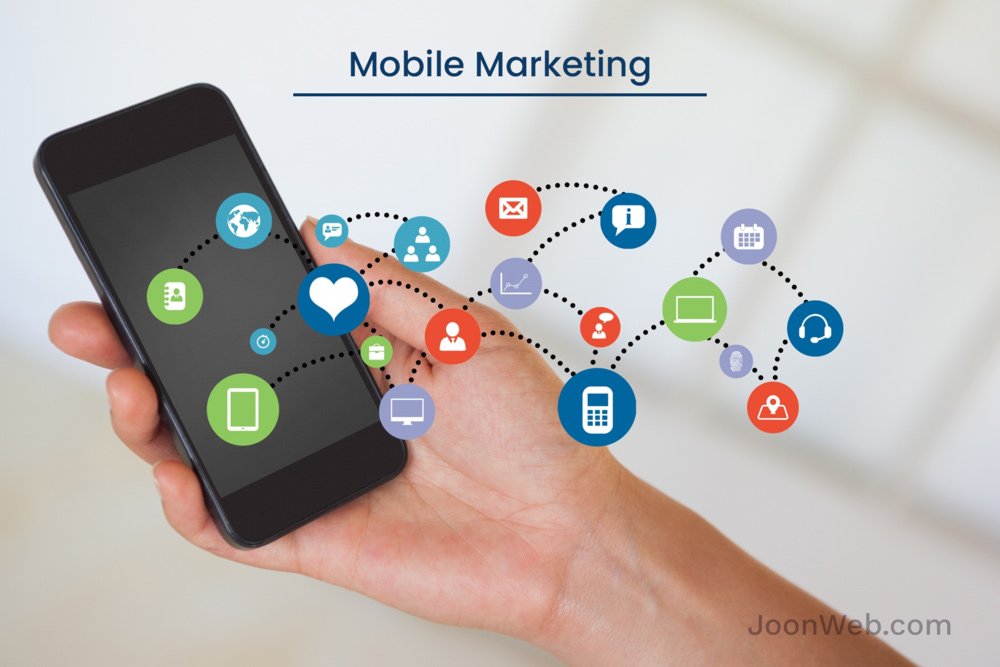Smartphones are owned by 66.5 percent of the world's registered citizens, according to UN statistics experts (WorldoMeters U.N. data, GSMA Intelligence). You must focus on offering a seamless experience that your audience expects to take advantage of mobile marketing's growing power.
Table of Contents
1. Mobile Marketing & Its Growth In Numbers
2. Mobile Marketing May Help With A Number Of Issues, Including
3. Mobile Marketing Components
4. How To Plan & Optimize Your Mobile Marketing Program?
Mobile Marketing & Its Growth In Numbers
Websites, email, SMS and MMS, social media, and applications are all used in mobile marketing to contact a target audience on their smartphones, tablets, and other mobile devices. Customers have begun to move their attention (and expenditure) to smartphones in recent years.
As a result, marketers are following suit in order to achieve real multichannel engagement. Marketing is getting more fragmented as technology becomes more fragmented. To capture and keep the attention of potential customers, content must be intelligent and properly targeted. Mobile Marketing strategy 2022 details have been mentioned in this article.
In terms of mobile marketing, this entails considering devices and leveraging SMS/MMS marketing as well as mobile apps. Any marketing plan, whether short-term or long-term, should include mobile marketing.
There is a mobile marketing channel for every sector of your audience, from email to pay-per-click (PPC), Search Engine Optimization (SEO), content marketing, and social media marketing. It can be difficult to create a consistent experience that customers expect when trying to attract, engage, and retain people across several platforms.
By allowing you to engage with more consumers in real-time at any stage in the customer lifecycle, mobile marketing may help you increase brand value and demand for your products or services. Mobile phones are getting more and more popular.
According to eMarketer, the mobile-only audience in the United States will expand to 55.7 million (almost 19 percent) by 2022, while Adweek predicts that 79 percent of smartphone users have their phones on or near them for all but two hours of the day. The globe now possesses more mobile devices (8.7 billion) than people due to our unquenchable quest for new technologies (7.1 billion).
Mobile Marketing May Help With A Number Of Issues, Including
Mobile marketing is unique in that it reaches individuals exactly where they are, in real-time. Furthermore, as more and more purchases are begun via mobile, it is an essential component of any marketing plan.
- Problem: I'm not sure whether my target market is on their phones. Mobile users today range in age from 7 to 90 years old (OneAudience). To put it another way, practically everyone has access to a mobile device in some form. The trick is to understand how and when consumers use their mobile devices. If you take the time to establish buyer personas, you'll be able to reach out to your target audience regardless of where they are.
- My website and content are not responsive, which is a problem. One of the first steps in building a mobile marketing program is to ensure responsive design across your website, emails, and landing pages. You can assure a fluid and easy-to-engage-with experience that will attract and retain consumers by utilizing responsive design.
- Problem: I have a lot of mobile traffic, but I don't have a lot of conversions. Improve your responsive site and landing page design, as well as personalize content for mobile, are some of the strategies that may be utilized to examine and improve your mobile marketing efforts. To future-proof their marketing strategy, companies must boost their mobile conversion rates.
- My problem is that I'm not sure how to include a mobile approach into my marketing strategy. The first stage in developing an effective strategy is determining what success entails. Bring together your key stakeholders to map out your mobile marketing strategy, evaluate existing activities (if any), and make recommendations for improvements.
Mobile Marketing Components
Text messaging and smartphone applications are only the tip of the iceberg when it comes to mobile marketing. To have a consistent marketing experience, you must consider responsive design across the board.
- Websites that are mobile-friendly: Mobile-friendly information fits on the screen without scrolling or zooming from side to side, loads quickly, and is error-free. The most important reason to make your website mobile-friendly is to give users a consistent and engaging experience (UX). Mobile UX has an impact on every stage of the buying process.
-
Marketing that is mobile-friendly Messages sent by SMS and MMS: You may provide material to clients via SMS (short message service) and MMS (multimedia message service) messaging, but it's crucial to use these channels intelligently. Learn the finest strategies for getting your message to your customers quickly, as well as the cardinal guidelines for a successful campaign, whether it's through promotions, videos, product alerts, or reminders.
-
Advertising and landing pages that are mobile-friendly: On mobile platforms, 57% of email is opened, and 69 percent of mobile consumers trash email that isn't optimized for mobile (Litmus). As a result, responsive design—a technique for dynamically transforming webpage content for optimal viewing on any device—is crucial in your marketing. Don't forget about landing pages as well.
-
Apps for mobile devices: If you have the right strategy and roadmap in place, mobile apps may help you develop deeper relationships with your customers. Examine the many types of applications available—productivity, commerce, retained engagement, and mixed-use—to determine if a mobile app is the best method to meet your acquisition, engagement, and conversion objectives.
How To Plan & Optimize Your Mobile Marketing Program?
Mobile marketing is both a short-term and long-term plan, and there are certain measures to take in order to establish a successful program.
Step 1: Create buyer personas for mobile devices. Buyer personas are a useful tool to help you understand your audience, which is the first stage in any marketing approach. Buyer personas are made-up characters who represent different sorts of buyers. Create a profile for each person that includes their history, job description, primary sources of information, goals, obstacles, preferred content type, objections, and/or position in the purchasing process. When you have a clear image of your target demographic, deciding on a channel and voice for your marketing messaging is much easier. You may create valuable buyer personas for mobile by observing mobile behaviors and using A/B testing.
Step 2: Make a list of objectives. You'll need to identify your goals and make a plan before launching a mobile marketing approach. Our guide will help you define your mobile marketing goals and key performance indicators (KPIs) across all channels, as well as understand customer lifecycles and develop personas, build your marketing calendar and marketing automation toolkit, and understand customer lifecycles and develop personas. Determine your core goals, target audiences, and cross-channel engagement strategies so you can see how the channels you're now utilizing may be included in your mobile marketing plan.
Step 3: Create KPIs. Mobile marketing, like all of your other marketing initiatives, should be tested and optimized. Determine which KPIs are reasonable and quantifiable in determining the effectiveness of your mobile campaign.
- Engagement: Make mobile-friendly content available to potential buyers looking for information about your sector or product. To increase mobile SEO, make sure your website is mobile-friendly.
- Make sure your lead nurturing emails are mobile-friendly and have clear calls to action. To encourage click-throughs, buttons in emails should be towards the top of the message and large enough to readily tap. Then, on your mobile-optimized landing page, make it as simple as possible for someone to fill out a form.
- Customer service is really important. Customer service is very much a marketing opportunity in a linked, social economy. Allow clients to contact you via whichever platform they want, including easy click-to-call buttons on smartphones.
Step 4: Keep an eye on your mobile stats. Google Analytics may help you track how your site is being used on mobile devices. Mobile behavior data demonstrates how effectively your mobile content engages your audience, while conversion data inform whether any of your critical landing pages still require mobile optimization. Dashboard tools may provide information such as traffic volume and quality, page view analytics, bounce rates, and more.







